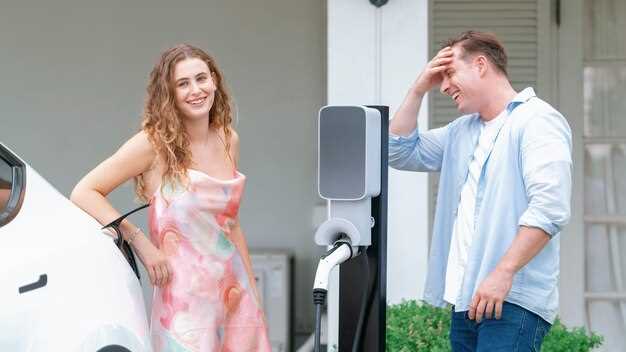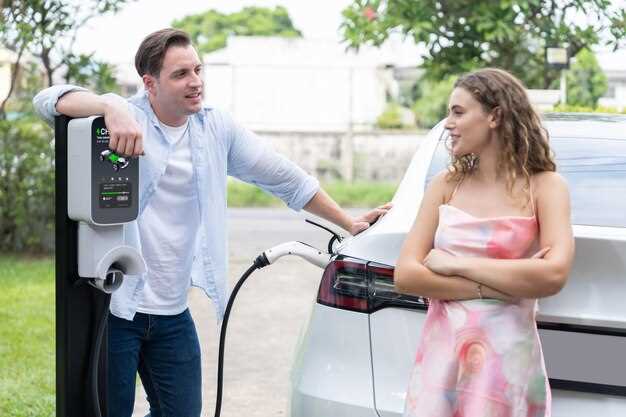
Electric vs gasoline cars – pros and cons

The automotive industry is undergoing a significant transformation, with electric vehicles (EVs) gaining popularity alongside traditional gasoline cars. As consumers weigh their options, it’s crucial to understand the advantages and disadvantages of both types of vehicles. Each offers a unique driving experience shaped by different technologies, fueling methods, and environmental impacts.
Electric cars, or EVs, are often praised for their environmental benefits. They produce zero tailpipe emissions, contributing to reduced air pollution and lower carbon footprints. Furthermore, the growing availability of renewable energy sources allows for a more sustainable charging infrastructure. However, concerns about range anxiety and the availability of charging stations can deter potential buyers.
On the other hand, gasoline cars have long been the staple of the automotive market, offering advantages such as longer driving ranges and more established refueling systems. However, they are often criticized for their negative impact on the environment due to greenhouse gas emissions and dependence on fossil fuels. Understanding these pros and cons is essential for consumers looking to make informed decisions about their next car purchase.
Cost of Ownership: Analyzing Expenses for Electric vs. Gasoline Vehicles

When comparing the cost of ownership for electric vehicles (EVs) and gasoline cars, several key factors come into play, including initial purchase price, fuel costs, maintenance expenses, and potential incentives. Each category can significantly impact the total cost of ownership over the lifespan of the vehicle.
Initial purchase price often presents a major difference. Generally, EVs tend to have a higher upfront cost compared to gasoline counterparts, primarily due to battery technology. However, this gap is narrowing as technology advances and production scales up. Additionally, various tax credits and rebates for EVs can substantially reduce the effective price.
Fuel costs represent another crucial aspect of ownership expenses. Gasoline prices fluctuate considerably, depending on market conditions, while electricity rates tend to be more stable. EVs typically offer lower operating costs, as charging an electric vehicle can be significantly cheaper than filling a gasoline tank. Moreover, the efficiency of EVs means they utilize energy more effectively, requiring less expenditure over time.
Maintenance costs also differ markedly between these two types of vehicles. Gasoline cars require regular oil changes, exhaust system repairs, and other maintenance related to internal combustion engines. In contrast, EVs have fewer moving parts and components that require upkeep, resulting in lower annual maintenance costs. This advantage can further enhance the long-term savings associated with electric vehicles.
Finally, depreciation should be considered when analyzing total ownership costs. Historically, gasoline cars have shown less depreciation relative to EVs, primarily due to concerns over battery life and changing technology. However, as the market matures, the resale value of EVs is improving, especially as demand grows for eco-friendly vehicles.
In conclusion, a comprehensive analysis of the various expenses associated with electric and gasoline vehicles reveals that while initial investment may be higher for EVs, their lower fuel and maintenance costs, alongside potential incentives and benefits, can make them a more economical choice over time.
Environmental Impact: Emissions and Sustainability of EVs vs. Gas Cars
The environmental impact of electric vehicles (EVs) and gasoline cars varies significantly, primarily due to their emissions and sustainability. When considering emissions, EVs are often seen as the cleaner option. They produce zero tailpipe emissions, meaning that during operation, they do not release harmful pollutants such as nitrogen oxides and particulate matter, which are common with gasoline cars. This aspect contributes to improved air quality in urban areas where vehicle congestion is prevalent.
However, the overall environmental footprint of an EV also depends on the source of electricity used for charging. If the electricity comes from fossil fuels, the indirect emissions can negate some of the advantages of driving an electric car. In contrast, renewable energy sources, such as solar and wind, significantly enhance the sustainability of EVs, making them a greener choice as the grid becomes cleaner.
Gasoline cars, while traditional, emit carbon dioxide (CO2) and other greenhouse gases, contributing to climate change. The internal combustion engine is inherently less efficient and generates more emissions per mile compared to electric alternatives. Moreover, gasoline extraction and refining have their own environmental repercussions, including habitat destruction and water pollution.
The sustainability of EVs extends beyond operational emissions. Manufacturing EVs, particularly the batteries, has been criticized for its environmental impact. The extraction of lithium, cobalt, and other materials can cause ecological damage and raise ethical concerns regarding labor practices in mining industries. As technology advances, however, improvements in battery recycling and the development of more sustainable materials are underway, aiming to reduce the environmental footprint of EV manufacturing.
In summary, while EVs present a promising solution to reducing on-road emissions, their overall environmental impact is closely tied to electricity sources and manufacturing practices. Gasoline cars, meanwhile, present a more direct and significant challenge to emissions and climate sustainability. The choice between these two vehicle types should consider not only immediate emissions but also long-term sustainability practices within the entire life cycle of the car.
Performance and Convenience: Real-World Experiences with Electric and Gasoline Cars

Electric vehicles (EVs) have gained popularity for their quiet operation and instant torque, providing impressive acceleration. Drivers often report a satisfying driving experience, especially in urban environments where stop-and-go traffic benefits from EVs’ ability to regenerate energy during braking. In contrast, gasoline cars (gas) typically offer a throaty engine sound and a more traditional driving feel, which some enthusiasts prefer. Performance-wise, high-end gas cars can still outperform many EVs in terms of top speed and long-distance performance, particularly in more demanding driving conditions.
When it comes to convenience, EVs provide unique advantages like home charging stations, allowing owners to charge overnight and start each day with a full battery. In contrast, gasoline vehicles require trips to the filling station, which can be less convenient, especially for those in areas with fewer gas stations. However, gas cars often have shorter refueling times, as filling a tank takes mere minutes compared to the lengthier charging processes associated with EVs, even with the fastest charging options available.
Range anxiety is a significant concern for many potential EV owners. While advancements in battery technology have improved the range of electric vehicles, gas cars generally offer a more extended driving range without the need for frequent stops. For long road trips, gasoline cars frequently win due to the extensive network of fueling stations and the ability to refill quickly, making them more convenient for some drivers.
Real-world experiences also highlight the variances in maintenance. EVs have fewer moving parts, which can lead to lower maintenance costs and less frequent service. Gas vehicles, with their engines and complicated components, typically incur higher long-term maintenance expenses. Yet, gasoline cars may appeal to those who prefer a more established service infrastructure and readily available parts.
Ultimately, the choice between gas and EV vehicles comes down to individual needs and preferences. Performance goals, driving habits, and convenience factors all play a crucial role in determining the ideal vehicle for each driver. While both types of cars have their respective merits and challenges, advances in technology continue to blur the lines, making the decision increasingly complex.